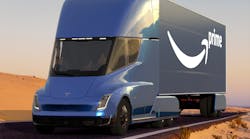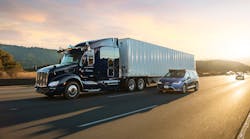“This report highlights the immense number of variables, complexity and multi-dimensional aspects to reducing fuel consumption in commercial vehicles. It underscores the importance of every aspect of the total vehicle system in reducing future fuel consumption, everything from the rubber on the road to the driver and everything in between.” –Allen Schaeffer, executive director, Diesel Technology Forum
The first step in government mandated fuel economy standards for medium- and heavy-duty trucks has now officially been taken following the release of a National Research Council’s (NRC) report this week, entitled Technologies and Approaches to Reducing the Fuel Consumption of Medium- and Heavy-Duty Vehicles.
By way of background, the NRC functions under the auspices of the National Academy of Sciences (NAS), the National Academy of Engineering (NAE), and the Institute of Medicine (IOM) – all four collectively referred to as the “National Academies” – which are chartered to provide elected leaders, policy makers, and the public with expert advice based on sound scientific evidence.
The NRC does not receive direct federal appropriations for its work, it should be noted, as individual projects are funded by federal agencies, foundations, other governmental and private sources, and the institution’s endowment. [Just by the by, the Transportation Research Board or TRB is one of the divisions of the NRC.]
OK, with all that out on the table, let’s get into the major findings of the NRC’s report. It recommends approaches that federal agencies could use to regulate fuel consumption for medium- and heavy-duty trucks, which account for about 26% of the transportation fuel used in the U.S., according to the group’s research.
Now (thankfully) NRC’s scientists determined that the “miles-per-gallon” measure used to regulate the fuel economy of passenger cars is not appropriate for medium- and heavy-duty vehicles, which are designed above all to carry loads efficiently.
Instead, any regulation of medium- and heavy-duty vehicles should use a metric that reflects the efficiency with which a vehicle moves goods or passengers, such as gallons-per-ton-mile, a unit that reflects the amount of fuel a vehicle would use to carry a ton of goods one mile. This is called load-specific fuel consumption (LSFC), the group said.
So, how do they plan to attain fuel economy gains for commercial vehicles? Well, for example, the NRC’s scientists suggest using “advanced diesel engines” in tractor-trailers, which could lower their fuel consumption by up to 20% by 2020, while improved aerodynamics could yield an 11% reduction. Hybrid powertrains could lower the fuel consumption of vehicles that stop frequently, such as garbage trucks and transit buses, by as much 35% by 2020 as well, according to NRC’s research.
Most of these recommendations dovetail with the goals of the “SuperTruck” fuel efficiency project recently given the green light by the Department of Energy, so at least there’s SOME ongoing research to support these pie-in-the-sky fuel economy markers being laid down by the NRC.
Yet there are huge gaps as well. Allen Schaeffer, executive director of the Diesel Technology Forum, noted that increased fuel efficiency and lower emissions are near opposite and competing forces in diesel engine design – and hey, guess what? We’ve been focused on the emission side of the ledger for over a decade now, to the detriment of fuel economy in many ways. Now, that thinking is supposed to undergo a 180 degree back flip – oh, and still keep trucks somewhat affordable too.
In many ways, this is creating conflicting policies, Schaeffer told me in a conversation earlier this year. “We’ve spent the last two decades controlling particulate matter and NOx [oxides of nitrogen] emissions in trucking, which led to reductions in fuel economy,” he pointed out. “Now, we’re looking to control greenhouse gas emission (GHGs) and requiring improvements in fuel economy. If we’d started with this goal first, we wouldn’t have done what we did over the last 20 years.”
However, we can’t change the past in this engineering debate – we can only deal with the challenges laid down in the present and future. It’ll be interesting to see where this new debate over commercial fuel economy standards takes us.



